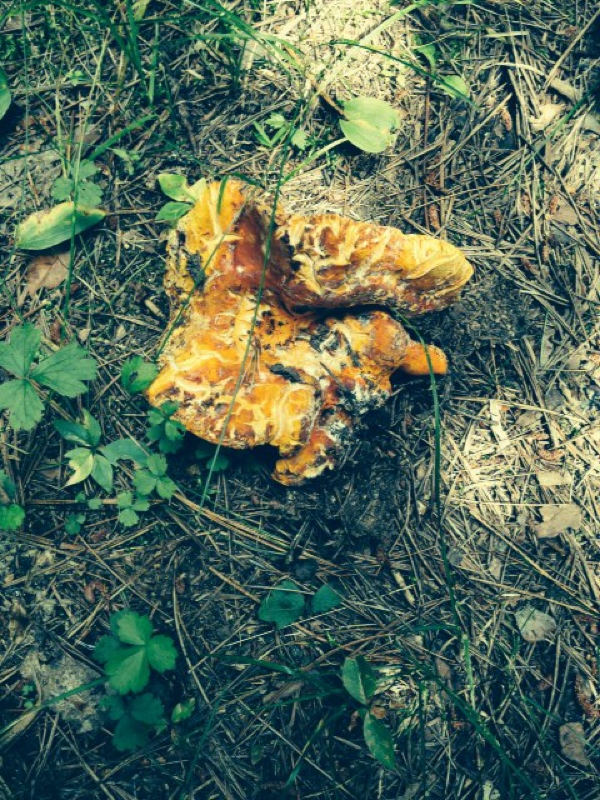We had several examples of Destroying Angel Amanita virosa. This beautiful, smooth, white member of the Amanita family is a “must know” species as it contains deadly poisonous toxins which, if the mushroom is eaten, can destroy liver and kidney functions. The mushroom has a large white volva at its base (may need to move soil to reveal it) Stem, gills and cap are white. A white ring circles the stem. A virosa often occurs in lawns and fruitings should be removed if children and pets use the area.
When gathering Chanterelles for the table, we should be aware of look-a-likes.
Another orange mushroom called the False Chanterelle Hygrophoropsis aurantiaca may be found in the same habitat. It fruits on woody debris and stumps of conifers. The cap is yellow-orange to orange-brown often with paler edges. In contrast to the Chanterelle, this mushroom has true gills which are narrow, close and forked. Gills are dark orange to yellowish. The orange to orange-brown stem is often curved and tends to be broader at the base. There is no fruity odor as is the case with chanterelles. Though sometimes listed as edible, the False Chanterelle .lacks good flavor and author Roger Phillips warns against eating it as it is known to cause hallucinations.

 RSS Feed
RSS Feed